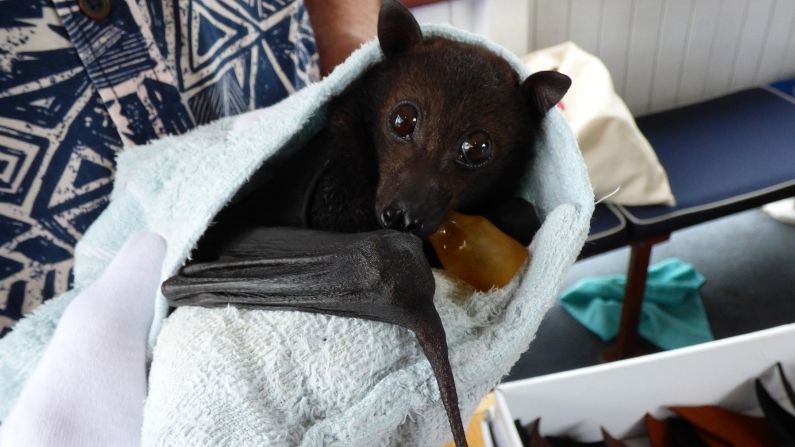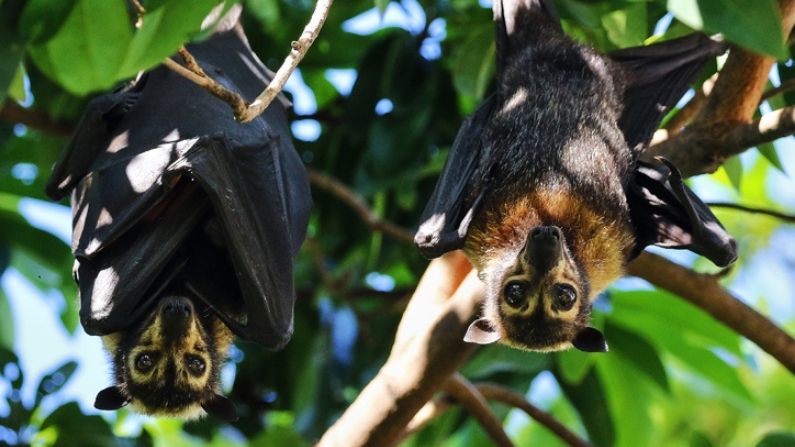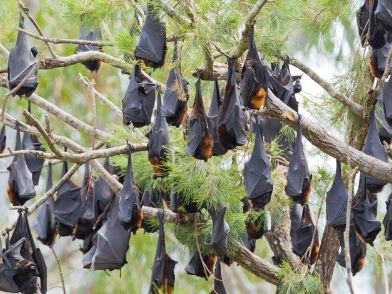Flying-foxes
© Bruce Thomson
Flying-foxes are megabats in the genus Pteropus and are among the largest bats in the world. They play an important role in dispersing seeds and pollinating flowering plants, making them crucial to keeping native forests healthy. Because bats are highly mobile, they can spread seeds locally and over great distances.
How we help flying-foxes
Every summer for more than 30 years, Wildlife Queensland’s Batty Boat Cruises have introduced thousands of people to the fascinating world of flying-foxes. This successful education initiative provides an opportunity for everyone to see flying-foxes in their natural habitat and learn why they are so important to our environment. Proceeds from the cruises fund bat conservation and support bat carers within Queensland.
 © Wildlife Qld
© Wildlife Qld
 © Paul Berridge
© Paul Berridge
Threats to flying-foxes
- Clearing or modifying native vegetation, resulting in inappropriate roosting habitat and limited availability of natural food supplies.
- Flying-fox camp disturbances and dispersal.
- Risk of entanglement and death in tree netting or on barbed-wire, and electrocution on powerlines.
- Heat stress events.
About flying-foxes
Mainland Australia has four Pteropus species of flying-fox. All four species are found in Queensland.
- Black flying-fox (Pteropus alecto)
- Grey-headed flying-fox (Pteropus poliocephalus)
- Little red flying-fox (Pteropus scapulatus)
- Spectacled flying-fox (Pteropus conspicillatus)
Flying-foxes have a good sense of smell and good eyesight, which enables them to navigate and find food during the night — especially pale-coloured fruit and flowers.
Unlike small insect-eating microbats, flying foxes do not have echolocation and use their eyes and ears like all other mammals.
Flying foxes are very vocal. They use their voices to communicate about feeding areas and campsites. They make the most noise during the mating season when defending their territories.
Campsites
Flying-fox campsites are usually on watercourses or near large bodies of water; these provide freshwater and help them find their way home after night feeding sessions.
The camp is where each flying-fox is born, raised, forms relationships and learns to survive.
Why are flying-foxes so important for the environment?
Flying-foxes are vegetarian. They eat mainly nectar, pollen and fruit, and are essential for our Australian forest health through long-distance pollination and seed dispersal. While everyone sleeps, flying-foxes make forests!
Living with flying-foxes
- Encourage flying-foxes to come to your backyard by planting lillipillies, small eucalypts such as the Plunket mallee (Eucalyptus curtisii; bloodwood (Corymbia intermedia) and other nectar-rich trees and shrubs.
- Flying-foxes often get caught on barbed-wire fences. Mother flying-foxes that are carrying babies are most vulnerable. Read our Living with Wildlife Blog to find out how you can make fences fauna-friendly.
- Never handle a flying-fox. Although only a small percentage of bats carry diseases that can be passed to humans (such as Australian Bat Lyssavirus), only experienced and vaccinated bat handlers should touch flying-foxes and insectivorous bats.
Read more fascinating facts about flying-foxes HERE (PDF 11 MB)




